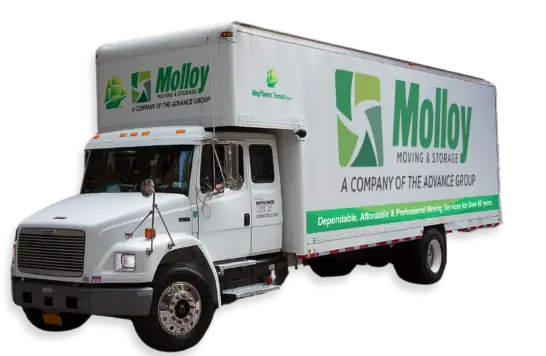Whether you’re an avid gardener or have a few chic succulents around your home, how you pack and move your plants is crucial to their future survival. For the best ways to transport houseplants or larger greenery, the experts at Molloy Moving & Storage offer three tips, so they flourish long in your new home long after moving day.
- Timing is everything when it comes to moving plants. In general, you can pack plants in their moving containers the night before or the morning of your move, but wait until the last possible minute to put them into your vehicle or moving truck so they aren’t exposed to harsh temperatures before the air conditioning or heat kicks in. However, there are a few extra precautions and steps to be taken in the weeks before moving day:
- Three weeks before the move: If your plants are in a breakable pot, then transfer them into a sturdy plastic pot, one that’s roughly the same size as the previous pot, since many plants can suffer negative effects when their roots are suddenly squished in soil.
- Two weeks before the move: Prune larger plants to keep them healthy and to make them easier to pack away into the backseat of a car or truck.
- One week before the move: Inspect your plants for any insects or parasites that shouldn’t be hitching a ride.
- Two days before the move: Water your plants, but be sure to avoid overwatering! If it’s winter, extra water can freeze in transit; in summer, the additional water can lead to the growth of fungus.
- Protect plants while you’re packing them. To avoid damaging the branches and blooms of your plants, delicately wrap larger houseplants in a light blanket or tissue paper. To secure your plants during transportation, place them inside a container, such as a plastic or cardboard box, with a paper wrapper around the greenery and towels or other fillers stuffed at the base to prevent excess movement. If the box can close, poke air holes in the top, so plants can breathe.
- Take the weather and climate into consideration. If you’re moving a long distance in the wintertime, then you’ll need to regulate the temperature inside your car so it doesn’t harm your plants. For example, don’t direct heat to your feet if your plants are situated on the floor. In the summer, not only will you want to keep your plants away from extended periods of sunlight, but you’ll also want to carve out time to stop in a shaded area and crack the window. This will avoid wilting and give the plant a rest break, just like humans need.
Looking for a moving company that’s deeply rooted in customer satisfaction? Contact the professionals at Molloy Moving & Storage.



